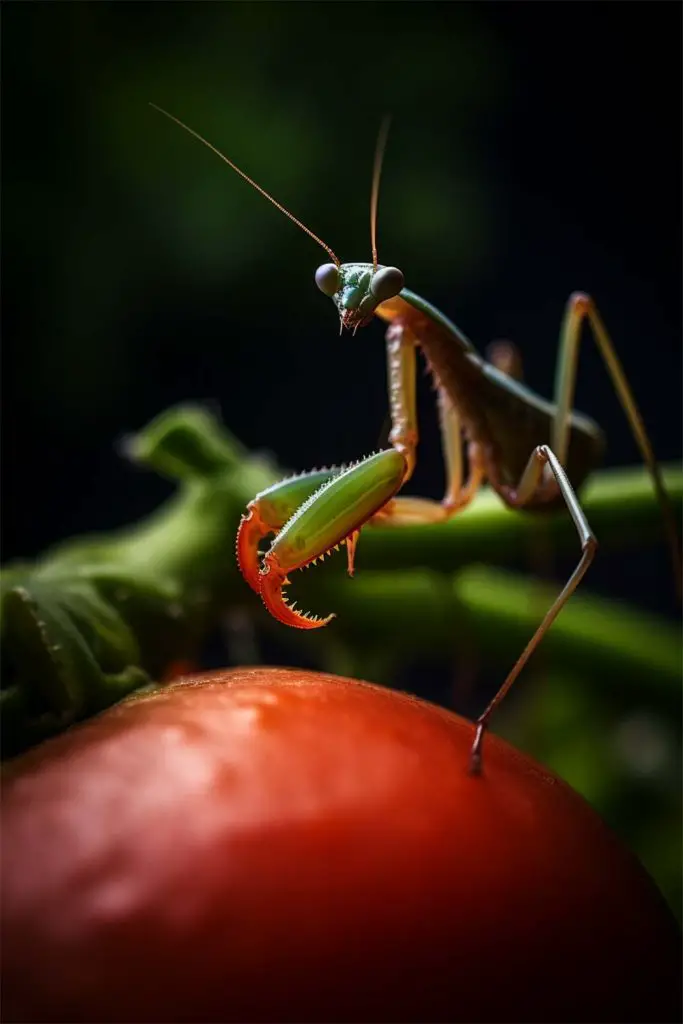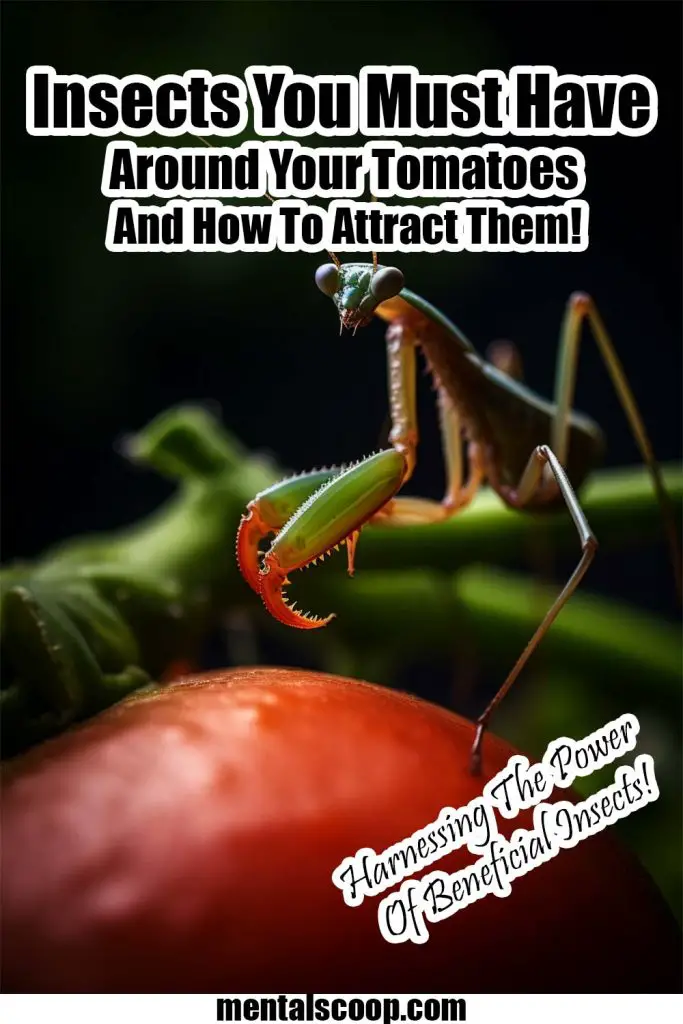Insects You Must Have Around Your Tomatoes And How To Attract Them!

When it comes to cultivating a thriving tomato garden, many gardeners focus on the traditional practices of watering, fertilizing, and pruning. However, harnessing the power of beneficial insects can be a game-changer in achieving a bountiful tomato harvest. These tiny allies can significantly contribute to pest control, pollination, and overall plant health. In this comprehensive guide, we will explore 13 must-have insects that should be present in your tomato garden and discover effective strategies to attract them naturally.
The Role of Beneficial Insects
Beneficial insects play a crucial role in maintaining a balanced ecosystem in your garden. They act as natural predators, preying on harmful pests that can otherwise cause considerable damage to your tomato plants. Additionally, some insects are excellent pollinators, which is vital for fruit production. By promoting the presence of these beneficial insects, you reduce the need for harmful pesticides and promote a sustainable and environmentally friendly approach to gardening.
Ladybugs: The Voracious Aphid Eaters
Ladybugs, also known as ladybirds or lady beetles, are iconic beneficial insects known for their appetite for aphids, mites, and other soft-bodied pests. These vibrant red and black insects can consume hundreds of aphids daily, preventing infestations that could stunt tomato plant growth. To attract ladybugs, grow plants like dill, fennel, and yarrow, which act as nectar sources, attracting these helpful insects to your garden.
Lacewings: The Guardians of Your Tomatoes
Lacewings are delicate insects with green or brown wings adorned with intricate patterns. These predators are voracious eaters of aphids, whiteflies, and caterpillars, providing a powerful defense against destructive tomato pests. To invite lacewings into your garden, create a conducive environment by planting pollen and nectar-rich flowers, such as cosmos and sunflowers.
Praying Mantises: Stealthy Tomato Protectors
Praying mantises are fascinating predators that blend seamlessly into their surroundings, waiting patiently to ambush unsuspecting pests. These ferocious hunters feed on a wide range of insects, including harmful ones like caterpillars, leafhoppers, and grasshoppers. Encourage praying mantises to take up residence in your tomato patch by providing shrubs and tall grasses for them to hide and wait for their prey.
Ground Beetles: The Nocturnal Guardians
Ground beetles are nocturnal insects that lurk in the soil during the day, emerging at night to feast on slugs, cutworms, and other ground-dwelling pests. These hardworking insects help maintain a healthy soil ecosystem while protecting your tomatoes from underground threats. Plant low-growing, densely packed vegetation to offer a suitable habitat for ground beetles.
Bumblebees: The Efficient Pollinators
Bumblebees are essential pollinators for tomato plants, promoting fruit set and ensuring a successful harvest. These robust insects use their unique ability to vibrate their wings, releasing pollen from the tomato flowers’ anthers. Attract bumblebees by cultivating a variety of flowers, such as lavender and bee balm, providing them with a diverse nectar source throughout the growing season.
Honeybees: Your Tomato Allies
Honeybees are well-known for their pollination services in agriculture. As they forage on tomato flowers, they aid in fertilization and fruit development. Encourage honeybees to visit your garden by offering a water source nearby and avoiding the use of harmful chemicals.
Hoverflies: Nature’s Tiny Helicopters
Hoverflies, also known as flower flies, are valuable pollinators and excellent predators of aphids, thrips, and other small insects. Their ability to hover in the air and fly sideways is a sight to behold in your tomato garden. Attract hoverflies by growing flowers like marigolds, alyssum, and daisies, which provide a source of nectar and pollen.
Tachinid Flies: Parasitic Pest Controllers
Tachinid flies are parasitoids that lay their eggs on caterpillars, grubs, and other pests. When the fly larvae hatch, they consume the host from the inside, eventually killing it. These beneficial insects help keep caterpillar populations in check, preserving the health of your tomato plants. Allow some areas of your garden to remain wild, as tachinid flies prefer these undisturbed spots to lay their eggs.
Green Lacewings: Delicate Garden Guardians
Green lacewings are close relatives of the brown lacewings and share similar predatory habits. They consume aphids, spider mites, and small caterpillars. Create a welcoming environment for green lacewings by planting dandelions and other tiny-flowered plants to provide shelter and sustenance.
Soldier Beetles: The Pest Patrol
Soldier beetles are excellent allies in controlling aphids, caterpillars, and other soft-bodied insects. These slender insects have distinctive orange heads and elongated bodies, making them easily recognizable. Planting goldenrod, sweet alyssum, and other flowering plants will help attract these helpful beetles to your garden.
Minute Pirate Bugs: Tiny But Mighty
Minute pirate bugs may be tiny, but they pack a powerful punch when it comes to pest control. These beneficial insects prey on thrips, mites, and aphids. To attract minute pirate bugs, grow a diverse range of flowering plants and avoid the use of broad-spectrum pesticides that may harm these helpful bugs.
Spiders: Silent Guardians of Your Tomatoes
Spiders are natural predators that help manage insect populations in your tomato garden. While they may not be insects, their presence is essential for maintaining a balanced ecosystem. Allow spiders to thrive in your garden by avoiding excessive use of pesticides and providing undisturbed areas for their webs.

More interesting articles you may be interested in reading:

How To Remove A Tree Stump Painlessly
10 Vital Home Maintenance Tasks You’ll Regret If You Forget
See How Much Propane Is Left In A Tank With No Gauge
Thanks for reading and be sure to share this info with your friends using the social share buttons below.
Talking about social stuff, consider liking our Facebook page to keep up to date with our articles. Check out our other articles for more mental scoops!
